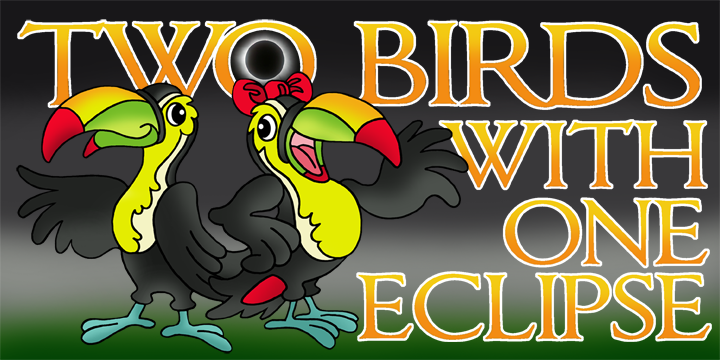A Little Unexpected Networking So, in spite of my lack of marketing gifts, a little networking was done for me. After I finished my last mural with special needs young adults, my mural was shown to a woman who could possibly be interested in what I do. And, she was interested! When she contacted me, I learned that she worked with 87 charter schools in Ohio -- AND SHE LOVES WHAT I DO! Research shows that when students take pride in their schools, they also are better behaved. Of course, ownership in a Mural Man mural helps to build that kind of desired pride. It's a win-win all over the place.
CBAN Connections with ACCEL Schools were made for my first mural at the Columbus Bilingual Academy North (called CBAN for short), just about fifteen minutes from where I live. It was a delightful school! I painted in the building that housed grades two through eight. Student participants were from all across Latin America. Their level of English varied from totally bilingual, to beginning levels of English, to no English at all, yet! So, I had to rely on my very pathetic Spanish speaking skills once again. Of course, I'm delighted that I can communicate at all in a second language. I know the truth that my Spanish is close to pathetic. However, nobody laughed even once. Nobody mocked my Gringo accent. We had a wonderful time -- en español ! It was so amazing to have this kind of experience so very close to my home.
As always, I requested input from people at the school for the design of the mural. The first requirement was the inclusion of the school mission statement. It's a good thing that I really enjoy lettering. In my initial discussion with the principal and a few others, we thought that illustrating the letters CBAN would do well to contain several of the ideas that they wanted incorporated.
In the Letter C, I included lots of faces of children of different ages and skin tones. It was the only location to place my very identifiable style of cartooning in the project. Letter B was filled up with flags across Latin America. It might look like a rather simple design, but several of those flags had national crests and symbols that took an enormous amount of time. Letter A was filled with a map of Central and South America. I love maps as much as I love lettering, so this was especially fun to create. And, finally, the Letter N was filled with the school mascot, a panther.
Now, if you are familiar with my murals, you know that I like to hide the current number somewhere in the mural. It was not easy to find a place for that 65. It couldn't easily go on a flag. There didn't appear to be a way to hide it in the map. The panther design was elegantly simple. So, I had to hide it somewhere within my cartoon characters. Of course, I was up for the challenge. If you look closely, the girl on the lower right side is wearing a colorful band to create her ponytail. If you look even closer, the number 65 is hidden within the design for that band. Whew!
Never Too Old to Learn I am always up for learning new things when I create my murals. Early on, with mural 4 in Romania, one of my hosts asked me why I drew my grid on the wall with a yardstick and pencil when I could have used a chalk line. Why had that never occurred to me? Of course, I have done that ever since. No brainer! So much later, with mural 46 in Moldova, my artist/interpreter asked why I drew the design on the wall with a pencil instead of a graphite pencil. (In case you don't know, you have to sharpen a regular pencil about every thirty seconds when you draw on a wall. A graphite pencil is best described as a crayon made of pure graphite. You never have to sharpen it. You can just draw, and draw, and design a mural to your heart's content.) It was another wonderful addition to my muraling skills.
My Favorite Store But, I learned two new things on Mural 65, and they both happened at my favorite store in the world. I love the Sherwin Williams paint store near my home! It's like shopping at "Cheers". All the employees know me by name. They love my murals. A poster advertising my murals in on permanent display in the store! And, someday, I'm going to paint with them.
For this mural, I spoke with main sales representative about the actual wall at the school. The area had a design with the top half of the wall painted white and the bottom half a deep chocolate. They were separated by a thick red line. He asked if I was going to sand the wall to get rid of any unwanted texture. That had never occurred to me before. Why not? I have no answer. But, I would have just painted over it and hoped that all the layers of paint would cover the lines. I'm happy to say that the sander worked wonders and I will always be reminded of Sherwin Williams every time I do this.
However, there was a second thing to learn for this mural thanks to the people at my favorite store. If you paint a mural, you may notice that red is a difficult color to paint. I painted the red banner that contained the mission statement for the school four times! It still didn't look good. My sales representative said I really wasn't using the right product this time, but it was too late to change at this point. He told me to put tape around the edges and then apply the paint with a roller. A roller would apply a thicker coat of paint and solve the problem.
Then, he gave me a free gallon or red paint!
So, you see why I love going to that store! And, the roller worked so well that I taped around every bit of red on the mural and rolled over each part. It required an extra day of work, but the results were amazing. I will have to do this for each mural from now on. Hopefully, I'll be remembering Sherwin Williams for a whole lot more murals in the near future. And, very hopefully, a lot of them will be for ACCEL Schools across Ohio.











 RSS Feed
RSS Feed